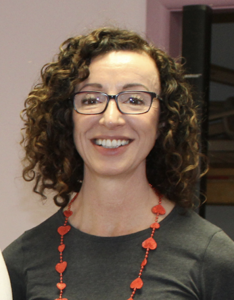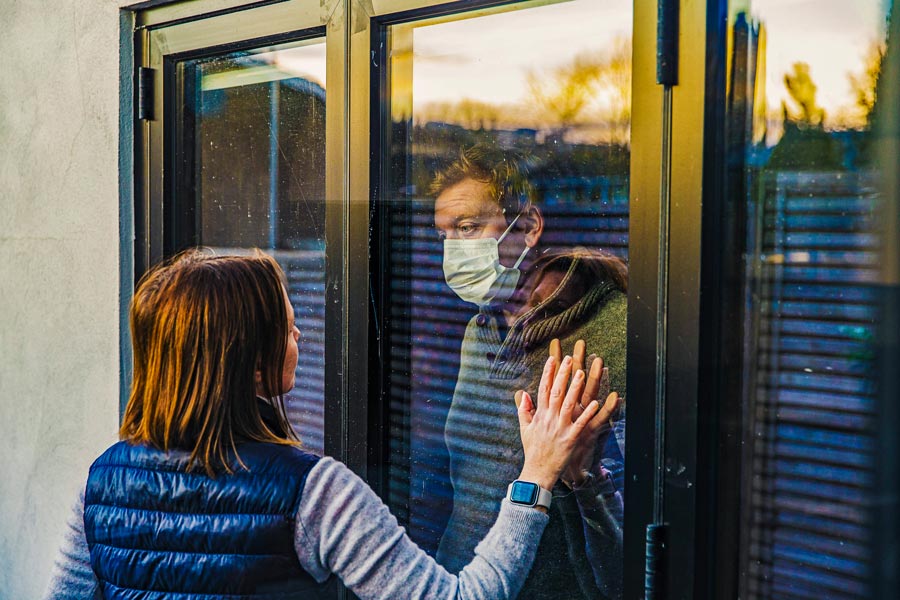WELLINGTON COUNTY – After a long haul of physical distancing and self-isolation due to the COVID-19 pandemic, the Ontario government has eased guidelines enough that families can reunite in a limited capacity.
This is especially important for seniors.
As Helen Edwards, seniors’ health services coordinator in Mapleton, indicated, the government has recommended that anyone over 70 years of age self-isolate because they are at higher risk of negative health outcomes if they contract COVID-19.
“This recommendation was especially difficult for so many seniors to adhere to, especially those who live alone,” Edwards said. “Overall most of the seniors I speak to have found it a lonely time and have missed the physical connections to their family and friends and their routines.”
These routines can include very active and socially engaged activities, said Fishburn, executive director of Canadian Mental Health Association Waterloo Wellington.

HELEN FISHBURN
“We’ve heard a lot from seniors actually through this pandemic,” she said. “They’ve been really, really impacted a lot because first of all they’re in a high risk category just by the nature of their age.”
Add underlying health issues and “all of a sudden you go from a senior who is really active, engaged in our community and gets a lot of his enjoyment, fulfillment, purpose and mental health from that, to all of a sudden being completely shut down and not being able to go out really at all,” Fishburn continued. “And that’s the story of what has happened throughout this pandemic.”
Isolation has had a negative impact on many seniors’ mental health because of loneliness and dependency on others for items like groceries and prescriptions.
Fishburn also said self-isolation has decreased checks on seniors at home to ensure they haven’t fallen, are eating well and drinking enough water.
“The impact of poor nutrition and poor hydration has a huge impact on a senior,” Fishburn said.
Edwards also indicated physical fitness is a concern.
“For those who have not been able to exercise it will take time to rebuild muscle mass; however the good news is that no matter how old we are, we are still able to rebuild muscle through exercise,” she said.
“There is always a silver lining and many seniors have expressed how grateful they are to their friends, family and their community for stepping up to the plate and offering supports.”
That support is increasing more now that the government has given the go-ahead to increase social circles to 10 people who are not necessarily from the same household.
“The people within your social circle are those that you don’t have to physically distance from, people that you can hug and touch and can become part of your daily routine,” Edwards said.
Fishburn added, “I think it’s a great way to bridge rather than just jumping right back into the pool. So we also know that expanding someone’s social … circle … is going to have a huge positive impact on their mental health, particularly for seniors.”
However, Edwards and Fishburn emphasized the need for caution.
Fishburn said everyone needs to understand they will have one social circle, they can’t be in multiple circles. This is especially important when it comes to seniors to keep them safe and well.
Edwards suggested seniors and other vulnerable citizens start slowly when opening their social circles.
“If you are in this category you may want to consider having a smaller social circle, adding people slowly, make sure that people in your circle are adhering to all public health guidelines,” she said.
“These include of social distancing, wearing a mask and washing your hands frequently.”
She also made it clear that if anyone in the circle is unwell with COVID-19 symptoms, they should get tested and maintain distance.
When interacting with anyone outside of a social circle it’s important to maintain physical distancing and other public health guidelines.
“Now that the weather has improved, you can safely visit with a family member outdoors, such as on a porch or backyard, providing you’re able to keep a distance of more than six feet,” Edwards added.
Residential care settings

HELEN EDWARDS
The pandemic has also been really challenging on seniors in residential care settings.
“We have heard from seniors how difficult it is for them to be separated from their spouse and children from their parents,” Edwards said.
“In addition many of these people provided hours of one-to-one care for their loved ones on a weekly or even daily basis and have not been separated from their loved one for this length of time since they were married.”
While the facilities have been connecting residents with family through digital technology, it’s not the same as a face-to-face time.
“I have worked in the long-term care system and am convinced that my husband is in an excellent long-term care facility,” said Joanne Weiler of Centre Wellington. “Inside visits are restricted so I visit him every day outside his window.
“He has dementia and requires total physical care.”
Prior to the pandemic Weiler spent over four hours a day with her husband.
“For the three months since COVID-19, I have not been able to do so,” she said. “I feel anxious, helpless, confused, uncertain, angry, severe sadness, regret and fear.
“I am looking into how I can bring him home, even though I don’t know how I would cope. I don’t know how much longer I can continue to see him deteriorate before my eyes and not be able to be with him or help him.”
However, on June 18, family members will be able to visit their loved ones in these residential care settings.
At long-term care homes one person can visit each resident outdoors each week at a minimum.
In retirement homes indoor and outdoor visits in designated areas or resident suites will resume.
Other residential care settings will allow outdoor visits of two people at a time.
Any visits at residential care settings will adhere to physical distancing requirements.
All visitors will also have to pass an active screening test every time they visit and confirm they’ve had a negative COVID-19 test within the previous two weeks. They will also adhere to all the other guidelines.
“Starting slowly will be hard but keeping residents safe is the main goal,” Edwards said.
Fishburn said it’s an important step to get people back in touch with their loved ones.
“When you think about a loved one being able to go back to a long-term care home to see their parent or their aunt or their grandmother or whoever it is in that home who’s so important to them, they haven’t been able to go since March,” she said.
“Some homes have endured a tremendous amount of pain and suffering through this pandemic and they haven’t been able to be with their loved one, even if they haven’t been impacted in terms of physically contracting COVID-19, they have certainly been impacted by the emotional weight of COVID-19.
“So even just being able to connect loved ones together, having them have some face-to-face time, regardless of whatever those restrictions look like, that’s a really good step forward and we should all be really happy and celebrating that.”
Fishburn recommended remaining present and feeling gratitude in every moment of this pandemic.
“The moment I have in front of me is for the first time since March I’m in front of someone that I love, that I can now touch, give them a hug, sit down and have a coffee, have a meal and regardless of what happens down the road, I want to be truly present and grateful in that moment,” she said.




